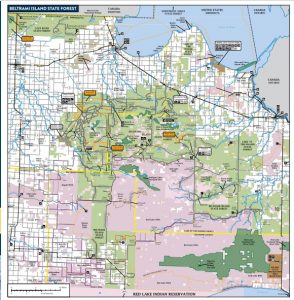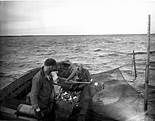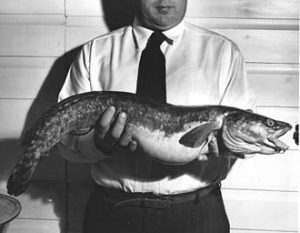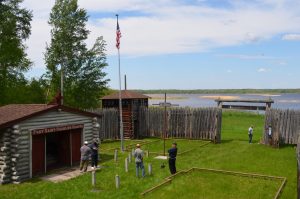
Enticing History in This Fishing Community
Lake of the Woods is a world class fishing location which is rich in its natural resource of fishing but has other great history throughout the area.
Lake of the Woods has an enticing history and historical places to visit. One favorite area to visit is Beltrami State Forest Area where virgin timber still stands and witnesses to an era where pioneers claimed stake in the land and homesteaded the area. Gravel roads wind through this beautiful forest area and is marked by the famous Faunce Tower, a must climb. Homestead sights are still marked in the area.
The History of Lake of the Woods County is rich as these pioneers moved into the forest areas around and started whittling out places to live and raise families. Early settlers established the town of Baudette and businesses started arriving. Because of the location of the town along the Rainy River, logging became a very profitable business.
This was the primary source of income for the area until the Fire of 1910 wiped out the towns of Baudette and Spooner. The Historical Society has a great amount of information about this historical event as well.
Lake of the Woods County Historical Society is located in Baudette, MN at 119 8th Ave SE. It is on the east end of town and has a beautiful building to store all of its history and artifacts from the ages past. Lindsay Marshall is our current director and she is a tremendous historian. She has worked within the facility arranging and rearranging displays to enhance the visitor’s eye. She has definitely captured the flavor of the area. If you’re interested in visiting, please call Lindsay at 634-1200 or send her an email at Lowhsociety@gmail.com and we will get you on the calendar.
Commercial Fishing became a part of the rich history here also. Fishermen netted sturgeon and northern and later years it included walleye, sauger and white fish. Families fished with sail-powered boats and pound nets for sturgeon. The roe was processed into caviar n location and then picked up by steam-powered boats that would transport it north to Kenora, Ontario, Canada. From there, a rail link shipped the caviar to the eastern fish markets. Unfortunately, the sturgeon population became over-fished and the market for this fish crashed.
years it included walleye, sauger and white fish. Families fished with sail-powered boats and pound nets for sturgeon. The roe was processed into caviar n location and then picked up by steam-powered boats that would transport it north to Kenora, Ontario, Canada. From there, a rail link shipped the caviar to the eastern fish markets. Unfortunately, the sturgeon population became over-fished and the market for this fish crashed.
With the decline of the sturgeon, fishermen switched species and gear and began fishing for walleyes with gill nets in the fall and summer. During the winter, they pursued burbots using fyke nets. Eventually they developed ways to use gill nets under the ice by using a machine called a jigger board to run a line that was used pull the gill net behind.
Check out this website for a great rendition of Commercial Fishing in the area. Commercial Fishing ended on the south side of the lake but still continues on the Canadian side.

Rowell with Burbot
Because of the incredible fishing, a local resident of Lake of the Woods , who was a chemist, discovered medicinal qualities that the fish had and established a fruitful business called Reid Rowell Laboratories. Although the company has changed names many times, there is still a strong pharmaceutical company still in Baudette known now as ANI Pharaceuticals.
Another enticing historical site is restored Fort St. Charles.  The Fort occupies the exact site of the original log fort and fur-trading post erected in 1732 by a valiant band of French voyageurs commanded by Pierre La Verendrye. It is located at the top of the Northwest Angle in Angle Inlet of Lake of the Woods in Minnesota.
The Fort occupies the exact site of the original log fort and fur-trading post erected in 1732 by a valiant band of French voyageurs commanded by Pierre La Verendrye. It is located at the top of the Northwest Angle in Angle Inlet of Lake of the Woods in Minnesota.
This great inland lake with its numerous rock islands and tree-covered shorelines gives these waters a primitive rugged beauty as intriguing today as they were in the days of the early voyageurs who first braved its unknown hazards more than two hundred and fifty years ago. Indians later came to the fort bartering their furs, and some started to settle in the same area and grew sow corn and peas.
From Fort St. Charles other forts were established and a vast section of mid-continent North America explored by Pierre La Verendrye and his four sons. When originally built in the year 1732, the year of George Washington’s birth, Fort St. Charles was the most northwesterly settlement of white men anywhere on the North American continent.
Fort St. Charles is a reminder of the earliest missionary labors that occurred in what is now northwestern Minnesota. For more than one hundred and seventy-two years the fort was the burial place of the youthful Father Jean Aulneau, S.J., and his nineteen French companions massacred on a nearby island in Lake of the Woods on June 6, 1736.
A reconstructed fort is available for touring and is open to the public. The fort is on Magnusons Island, located at the Northwest Angle. Accessible by boat, the Island Passenger Service of Angle Inlet, MN can provide you with transportation to the fort; during the winter months a snowmobile trail is open.
Don’t forget the Painted Rock in the northern waters of Lake of the Woods where native pictures still adorn the rocks speaking of a time past and declaring the rich history of the lake. Because it’s an international lake, the Canadian side also has its own set of history. Feel free to explore those facts as well.
For more information contact these websites: www.lakeofthewoodshistoricalsociety.com or at www.facebook.com/Lake-of-the-Woods-Historical-Society. Also visit www.lakeofthewoodsmn.com/lodging for your stay at Lake of the Woods.



